Hawaii wildfires: What caused the deadly blazes and is climate change to blame?
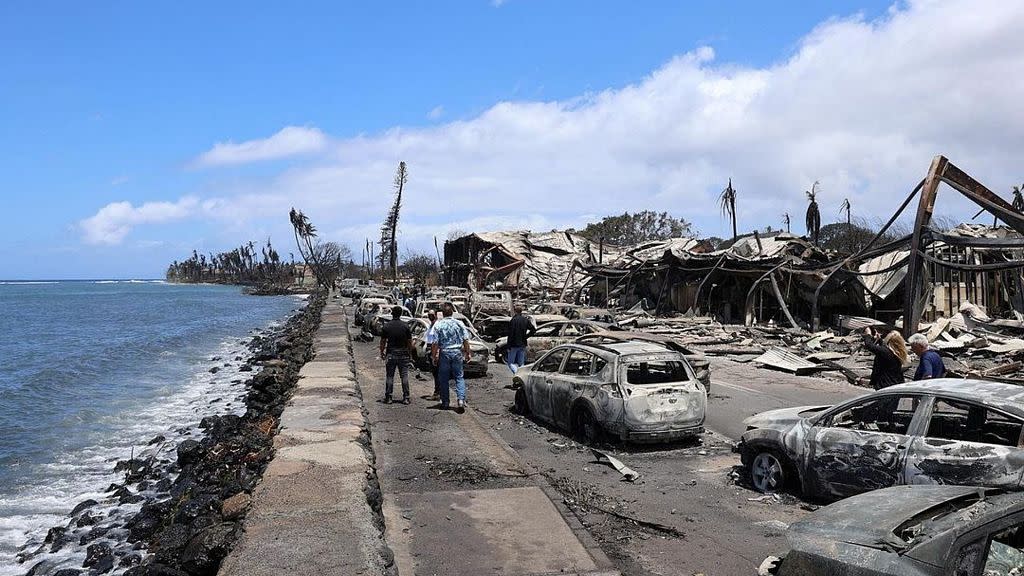
Wildfires on Hawaii's Maui island and Big Island have killed at least 96 people, forced thousands of residents and tourists to evacuate, and devastated the historic resort city of Lahaina.
The blaze which devastated the town of Lahaina is one of the deadliest US wildfires in over 100 years, according to research from the National Fire Protection Association.
Authorities have warned that the effort to search for and identify victims is still in its early stages. Dogs trained to detect human remains, called cadaver dogs, have been called in to help identify victims in the wreckage of buildings.
Here are some key questions and answers about the disaster.
Catania airport: Terminal reopens but flights still cancelled or diverted
WATCH: Catastrophic wildfires lay waste to historic Maui town of Lahaina
How did the fires in Hawaii start?
The official causes of the fires, which started on Tuesday night (8 August), have not yet been determined.
However, the National Weather Service had issued warnings for the Hawaiian Islands for high winds and dry weather - conditions ripe for wildfires - which it cancelled late Wednesday.
A lawsuit has also been filed against Hawaii's main electricity provider. It claims that power lines blown over by Hurricane Dora led to the spread of the Lahaina wildfire.
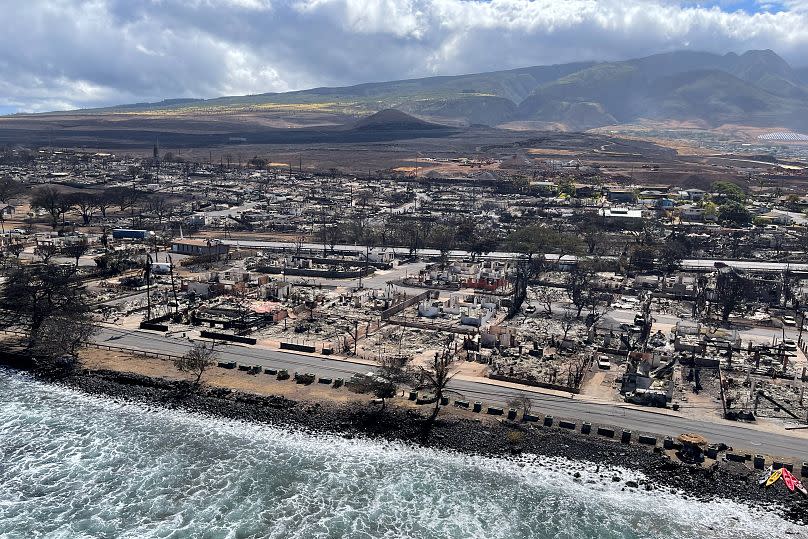
"These power lines foreseeably ignited the fast-moving, deadly, and destructive Lahaina Fire, which destroyed homes, businesses, churches, schools, and historic cultural sites," it alleges.
Nearly 85 per cent of US wildfires are caused by humans, according to the US Forest Service. Natural causes include lightning and volcanic activity.
In Hawaii, less than 1 per cent of fires are due to natural causes, according to Elizabeth Pickett, co-executive director of the Hawaii Wildfire Management Organization. The Hawaiian Islands have six active volcanoes, including one on Maui.
Is climate change to blame for Hawaii's fires?
Around 14 per cent of Hawaii is suffering from severe or moderate drought according to the US Drought Monitor and 80 per cent of the state is classed as abnormally dry.
Since 2008, there has been a particularly dry period with scientists calculating that 90 per cent of Hawaii is getting less rainfall than it did 100 years ago.
Combined with the high winds from Hurricane Dora, warm temperatures and very low humidity, there was an increased risk of fire danger.
Hawaii's Governor Josh Green has said that the wildfires are the "worst natural disaster that Hawaii ever faced".
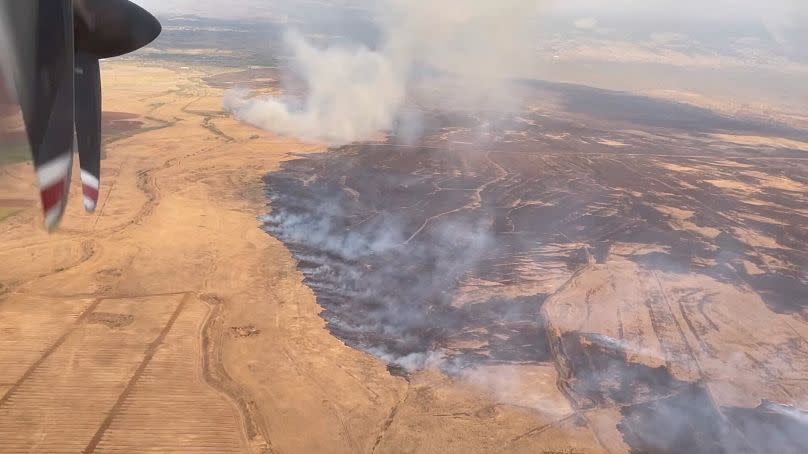
He has blamed the deadly blazes on a combination of weather conditions never seen before, linking them to climate change.
"We're seeing this for the first time in many different parts of the world," Green added.
Record-breaking heat this summer has contributed to unusually severe wildfires in Europe and western Canada.
Scientists say climate change, driven by fossil fuel use, has led to more frequent and more powerful extreme weather events.
'The worst disaster I've ever seen': Residents dived into the ocean as wildfires ripped through Maui
Torrential rain, flash floods and raging wildfires: Europe’s extreme summer
Why didn't emergency sirens go off?
Hawaii has one of the world's largest emergency siren systems. But, as the deadly wildfires broke out, it remained silent.
Officials have said that the 400-siren system wasn't activated. Some residents have said they didn't receive an official text or phone warning either.
Many were taken by surprise as fires spread at an astonishing speed. Some say that the blaze may simply have moved too quickly for a formal response.
The Hawaii Emergency Management Agency has confirmed that mobile phone alerts and messages on televisions and radio stations were activated. As wildfires spread on Tuesday, power and most communication services - including emergency calls and cell phones - were cut off.
Officials had to resort to public radio stations and posts on official websites and social media to update residents.
Hawaii Attorney General Anne Lopez has called for an official review of the emergency response to the wildfires with the hope of "understanding the decisions that were made before and during".
What is driving Hawaii's wildfires?
Winds from Hurricane Dora, hundreds of miles southwest of the Hawaiian Islands in the Pacific Ocean, have fanned the flames across the US state, officials say.
The Lahaina fire on Maui travelled at an incredible speed of around "one mile every minute," according to Governor Green. He blamed high winds for the speed of the spread.
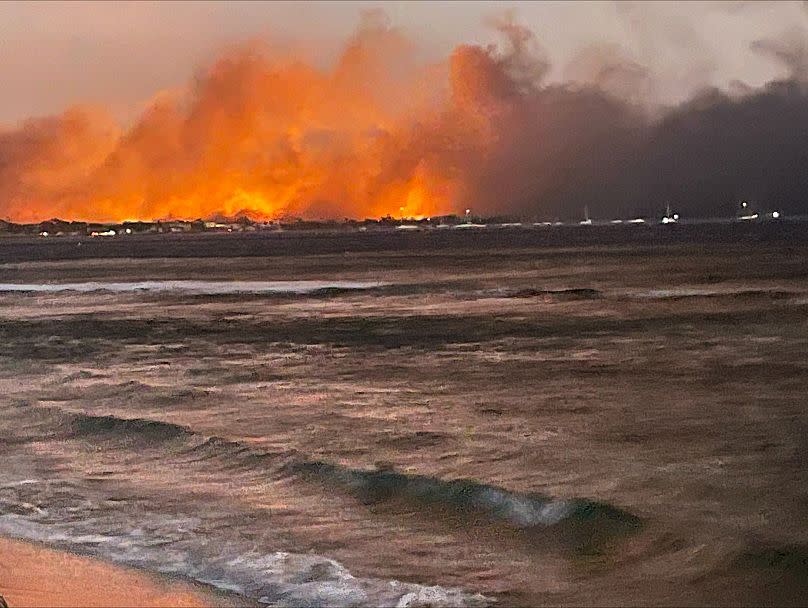
In addition to Dora, a low-pressure system to the west near Japan is also contributing to the high sustained winds. Dry vegetation is also a factor.
The spread of flammable non-native grasses such as Guinea grass in areas of former farmland and forest has created large amounts of small, easily ignited materials that increase the risk and severity of fire.
Such grasses comprise 26 per cent of Hawaii, according to Pickett.
In pictures: Slovenia faces ‘worst-ever natural disaster’ after extreme flooding
Volcanoes, shipping and dust: What else could be fuelling this summer’s heatwaves?
Where are the fires and how contained are they?
The fires have caused widespread devastation in Lahaina, a beach resort city of about 13,000 people on northwestern Maui that was once a whaling centre and the Hawaiian Kingdom's capital. It now draws 2 million tourists a year.
As of Sunday evening, the Lahaina fire was 85 per cent contained, while the Pulehu fire, burning to the east, has remained 100 per cent contained. The Upcountry fire in the mountainous centre of the eastern mass of the island is now 60 per cent contained.
The fires have also scorched parts of the Big Island.
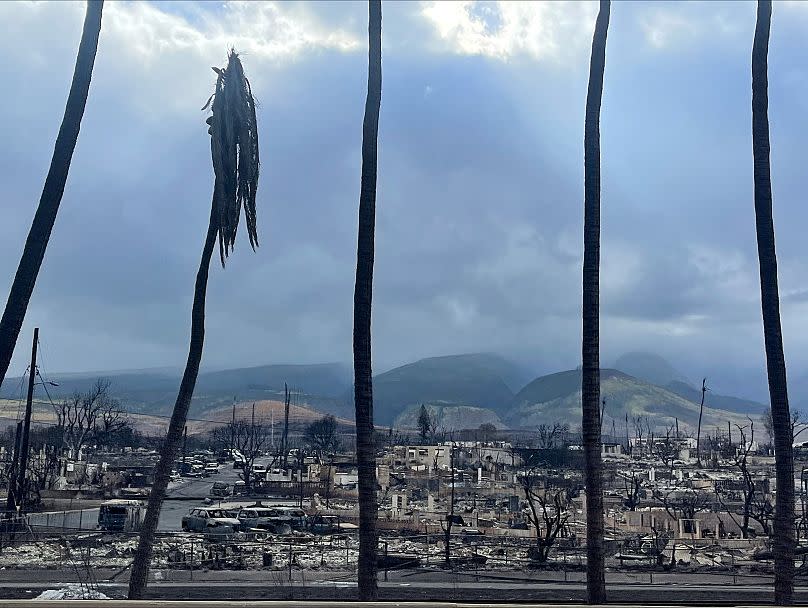
Some 271 structures were destroyed or damaged, the Honolulu Star-Advertiser said, citing official reports from the US Civil Air Patrol and Maui Fire Department.
Hawaii is an archipelago about 3,200km west of the US mainland. It is made up of eight main islands, including Hawaii, known as the Big Island.
The island of Maui lies to the north and west of the island of Hawaii.

 Yahoo News
Yahoo News 
